5 Types of Customer Feedback: How to Gather, Process, and Enjoy It
Learn more about the benefits of consumer feedback and how to better work with it.
Written by Evelina Carillo

Different types of customer feedback can be incredibly useful for your business. Not only can it validate what you’re doing right, but it can also pinpoint issues that may need to be addressed and improved. The constructive philosophy customer service requires can be learned through the most effective method: mitigating negative experiences while maintaining a positive brand image.
Of course, every organization likes to see positive feedback that praises different elements of your business model. That praise can cover everything from your products or services to your customer service.
However, negative feedback can be useful too. If customer pain points are highlighted, you can make informed decisions to fix and improve the customer experience. With customer feedback coming from so many different sources, how do you collect that feedback? And, once collected, how do you sort it and use it?
Why is customer feedback important?
At the end of the day, your customers are crucial to your business. It is your customers who buy your products or services and thus provide the revenue stream that allows your business to survive and hopefully grow. You want:
- The customer journey to be as smooth as possible.
- A positive customer experience.
- Customers to remain loyal to you.
- To build a long-term relationship with your customers.
So, listening to what those customers say and think is essential. It can let you know the areas of your business that they like, sometimes a lot, and it also can identify areas of their journey that they dislike or have experienced problems with. Listening to the different types of customer feedback is something that you have to do as it lets you improve your relationship with them.
Another good use of customer feedback is identifying reasons for customer churn. High customer churn rates can be costly, as you will see a decrease in average CLVs (customer lifetime values) and an increase in CACs (customer acquisition costs). From an internal perspective, sharing positive customer feedback can both validate existing processes and boost employee morale.
5 types of customer feedback
There isn’t one single type of customer feedback. It can come in many forms and can focus on different areas of your business operations. Knowing the different types that apply to your business — and how to collect them — can make it easier for you to identify sources and process the data you collect.
Product feedback
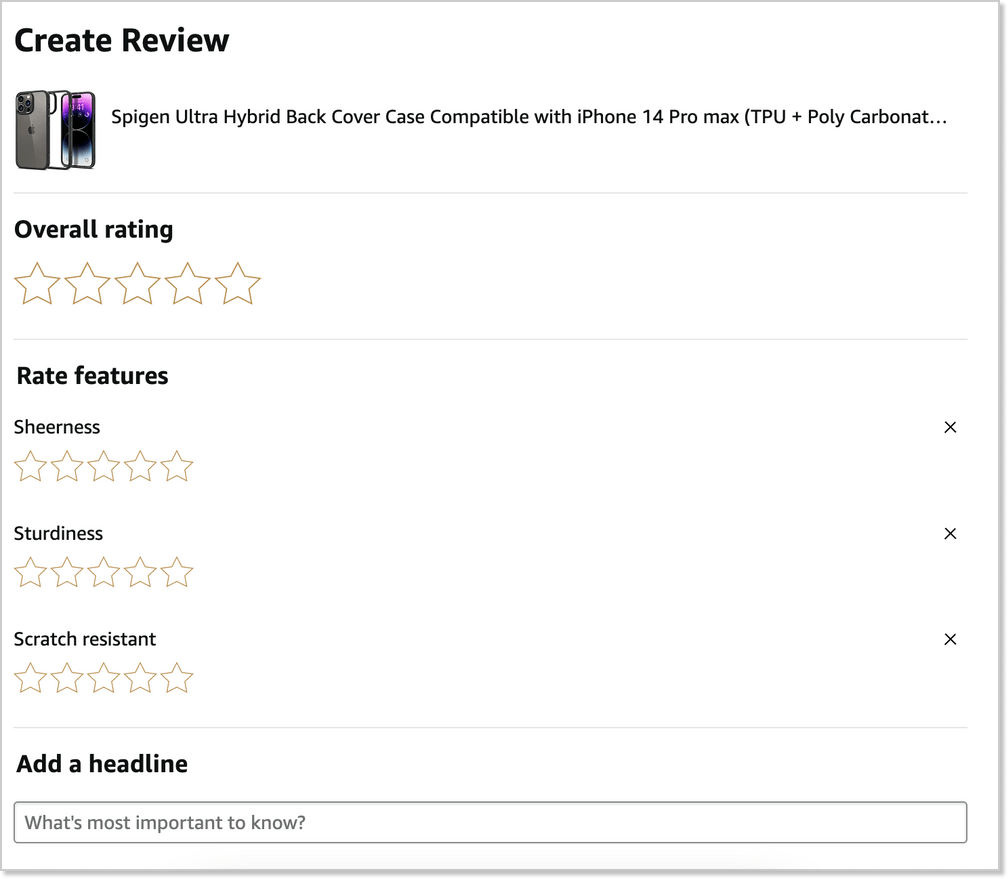
How good are your products or services? This type of feedback can be one of the most important for many businesses. It can cover many aspects of your offerings, from customer reviews (more of which later) to identifying what products customers want you to carry in the future. It can also help you see the difference between what you offer and what your competitors are doing.
Combining product feedback with analysis of current (and predicted) consumer trends allows you to make informed decisions on what products to drop and what products to introduce in the coming months or years. If you are actually manufacturing products, it can also help identify features that are missing or are not fully meeting customers’ needs so that you can make changes to future versions if possible.
App rating and bug reports

If your organization develops apps and software, you know how important it is to get things right, especially in such a competitive market. However, bringing a bug-free product to market is virtually impossible, even with the most stringent development and testing cycles. That means that most businesses need to focus on fixing or patching those bugs as quickly as possible, and it’s customer feedback that identifies any errors.
Fixing bugs and other errors can be costly, but when you consider that there is an average of 1-25 errors for every 1000 lines of code, you can see that it’s an important issue that isn’t going away. Customer feedback can alert your DevOps team to bugs affecting performance so that they can work on fixing the code that has caused those bugs.
Customer review and satisfaction
When customers are happy, they are more likely to be loyal. Customer retention rates can mean better profit margins and lower costs. The other thing to consider is that today’s consumer is more savvy. Before deciding on a purchase, they will often check online reviews for both a guide to the quality of your products and also to read the experience people have of you as a brand.
That can mean that you will have lower CACs for new customers who have read a positive review, either on your own website, social media, or one of the many independent review sites (or even on Google).
Online customer reviews can also highlight any problems with your sales funnel or in other areas, such as logistics or if you are following the rules of customer service. Regular monitoring of the various places reviews are left and well-thought-out replies are essential to your customer experience strategy.
Complaints and queries
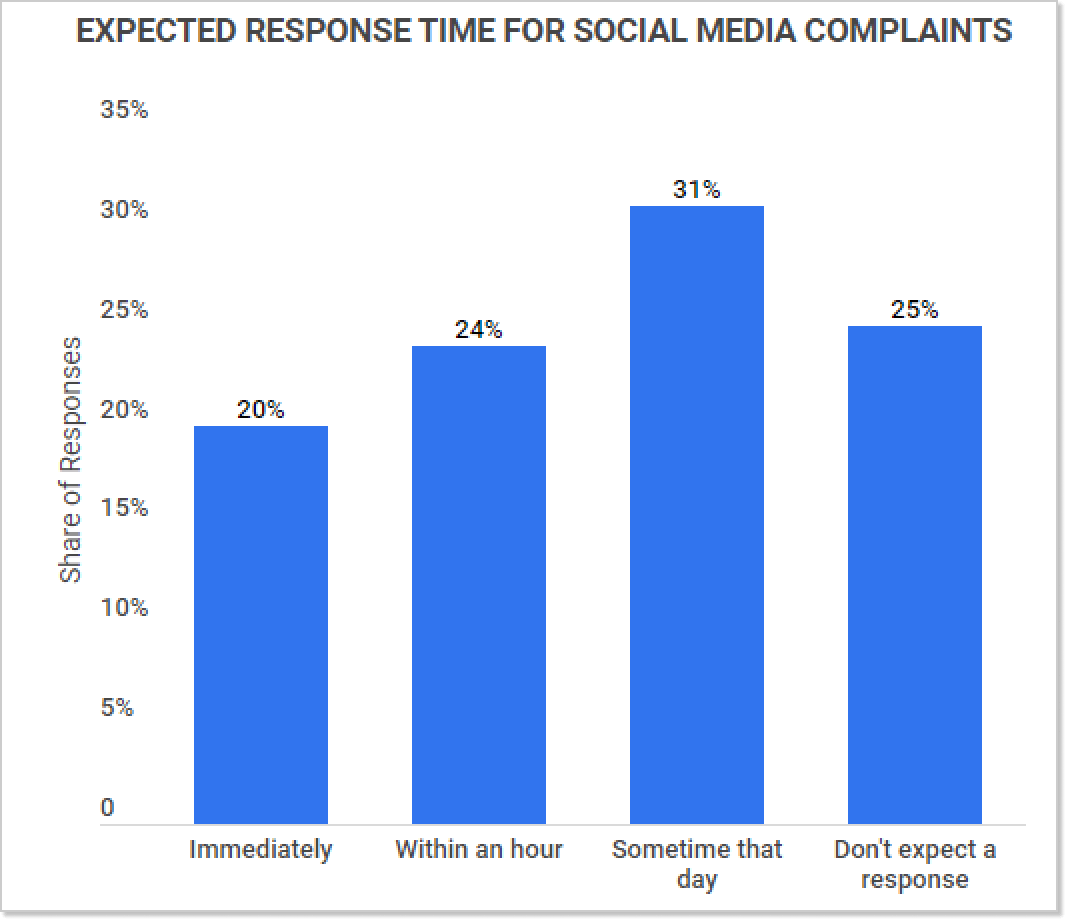
No business is perfect, but how you deal with complaints can affect people’s perceptions. These might come via your customer service team, who will usually be your front line when it comes to customer complaints and where your exceptional customer service skills play an important role.
It can also come via your social media platforms or other channels. When a complaint is handled well, and the particular issue is solved, then you can prevent that customer from adding to your churn rate and may actually make them happy with your service.
It’s again the customer service team that will field many of the queries you receive, though customers may use other contact channels, too. Queries can be wide-ranging and could cover anything from wanting to know how to use a particular product to wanting to know the benefits of an Australian domain name compared to a generic .com domain. As with complaints, it’s essential to handle these in a friendly and helpful manner, as it can be the deciding factor when it comes to a customer making a purchase.
Feature requests and customer preference
As the old saying goes, “You can please some of the people all of the time, you can please all of the people some of the time, but you can’t please all of the people all of the time.” That saying can be a crucial rule for your business, but it shouldn’t mean you don’t listen to customers’ requests for new features or preferences. If enough people are asking for something, and if it’s cost-effective, then it’s probably something you should be looking at.
Requests for new features or changes to how you do things can be one of the important types of customer feedback. As with other types, it’s all about listening to your customers and keeping them happy. For example, suppose a significant number of your customers are asking that you add a specific payment option to your checkout process. In that case, doing so will likely increase the number of customers making a purchase.
How to gather and process customer feedback
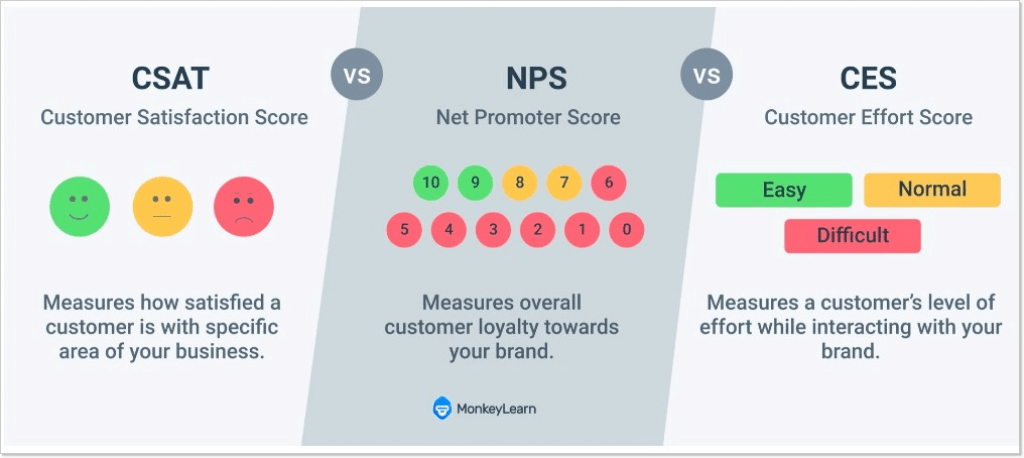
With so many types of customer feedback out there, you need to decide which ones are relevant to you. Once you have decided on that and some form of prioritization, then you need to consider two things: how will you collect the feedback and then, once collected, how will you process it so you have easy-to-understand data that can inform decisions.
Additionally, it’s essential to emphasize the importance of delivering an omnichannel experience to cater to the diverse needs and preferences of your customers.
Select feedback collection method (surveys, forms, reviews)
You need to decide on what methods you are going to use to collect feedback. In some cases, you will actively seek feedback from customers. For example, suppose a customer has bought a domain nz name from you. In that case, you might send them a survey or form in a post-purchase email to ask how the buying process was, whether they encountered any issues during the setup process, and if they’re happy with the product.
You can use surveys or forms to ask questions such as:
- Their overall experience with your brand
- Their experience with a specific area, such as customer support or service.
Next, you’ll have a few more considerations to make, including:
- The population size of your survey
- How many responses you need to make the survey statistically valid
- Whether you will be surveying all of your customer base or whether you are segmenting them into different demographic groups (and possibly asking different questions).
One of your primary types of customer feedback is reviews. These can present many challenges when it comes to the collection, but the data collected may be invaluable. Customers may leave reviews on your own website or social media platforms.
These are fairly easy to collate (and even use for marketing!). However, they may leave them in other places, such as independent websites or other platforms. These other sources can be important depending on how many have been posted.
Identify key metrics and essential questions
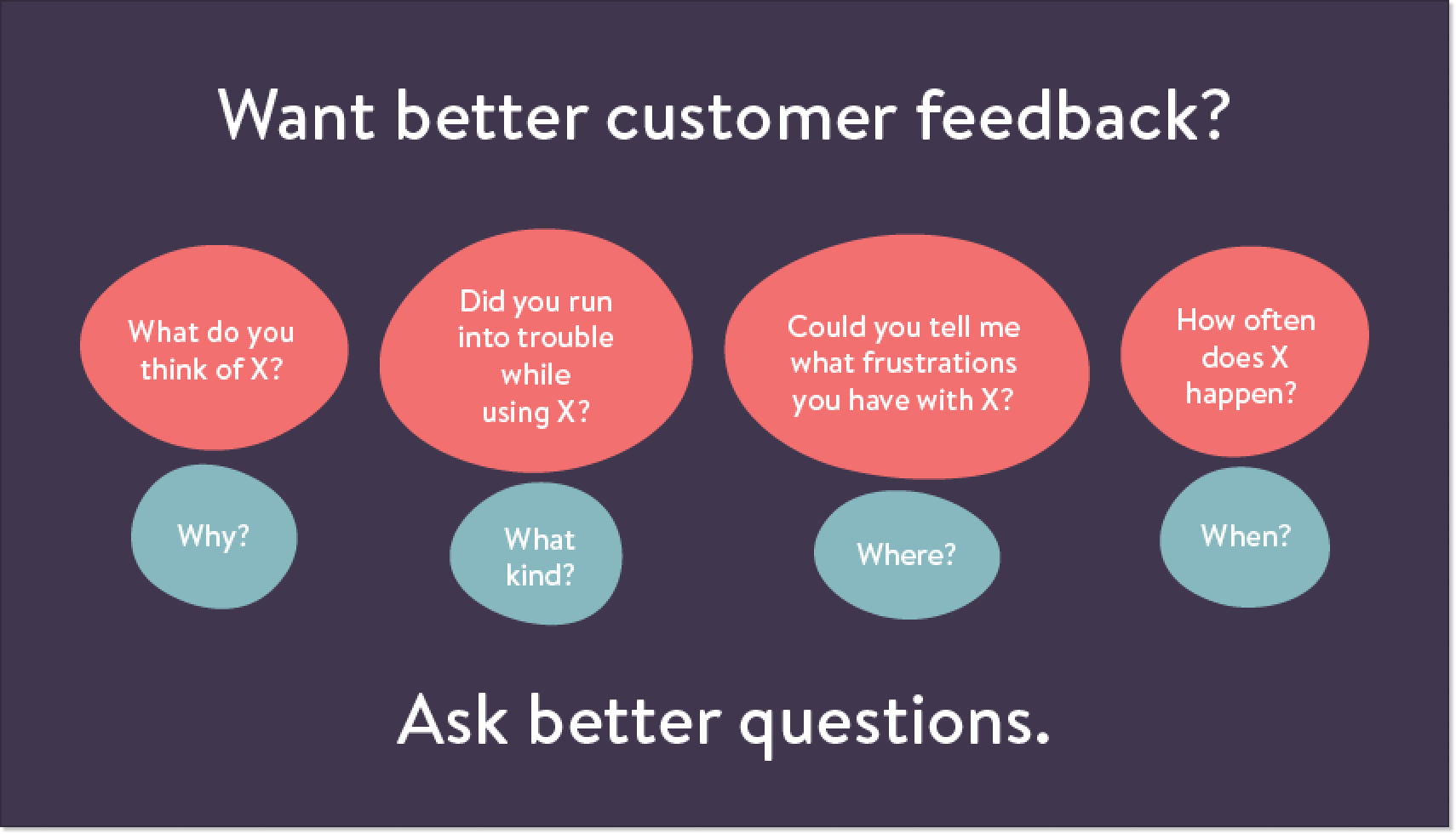
So, you know how you will collect feedback, but how will you actually measure it? While the metrics and KPIs that matter most can vary from business to business, there are some metrics that will matter to all organizations:
-
Net promoter score (NPS). NPS is a simple survey that can be carried out at the end of a call or in a follow-up email. It consists of a simple question: How likely are you to recommend our company? It has a scale of 0-10, and you split the results into three groups.
People who score 9 or 10 are known as promoters and could become brand ambassadors. 7 and 8s are passives; you can work on this group to improve their scores. Customers who give a score of 0-6 are called detractors, and they are unlikely to be loyal customers and may even leave negative reviews online.
-
Customer Satisfaction Score (CSAT). CSAT focuses on a specific question, such as the product purchased or the quality of customer service. You can again use a simple scale that usually has five alternative answers. For example, if you asked how good the customer service was, you could have a scale from ‘very poor’ to ‘very good.’
The advantage of CSAT surveys is that you can follow up on your initial question and drill down into the details. Sticking with the example above, if a customer said ‘very poor,’ you could ask follow-up questions such as ‘What aspects of the service were you unhappy with?’ or even ‘How could we improve the service?’.
-
Customer Effort Score (CES). Today’s consumers want things to be as simple as possible when looking for or buying a product or service. So, for example, you could initiate a CES survey by asking how difficult it was to find a product on your website or how difficult the checkout process was.
Companies like CES surveys because they usually give immediate information that a business can then take action on. Keeping a close eye on your CES scores means that you can adjust your website or app where needed. And, as CES surveys are proactive and usually immediate, you can identify pain points and perhaps stop a customer from abandoning your brand.

-
Abandonment Rate. This is something that can be important but can vary from business to business. In e-commerce, the average cart abandonment rate is 70.19%. But you may operate a call center where the call abandonment rate will matter when customers get fed up waiting in a queue.
There can be many reasons for cart abandonment, and a survey or form can help identify them so that you can take steps to rectify any issues. Of course, some people may simply change their minds, and you can do little about that. However, you can address many of the reasons for cart abandonment.
As you can see from some of these metrics, the questions you ask can range from general to very focused. Questions such as the recommendation one for NPS, while simple, can be one of the essential types of customer feedback to have data on. It gives you a general overview of how people view your brand.
When it comes to specific questions, you may want to focus on different areas of your business, for example:
- Your customer support team
- Your checkout process
- Your timely and accurate resolution of any bugs or issues.
Essentially, your customer survey questions can vary according to your needs when looking at any area.
Streamline with automation tools
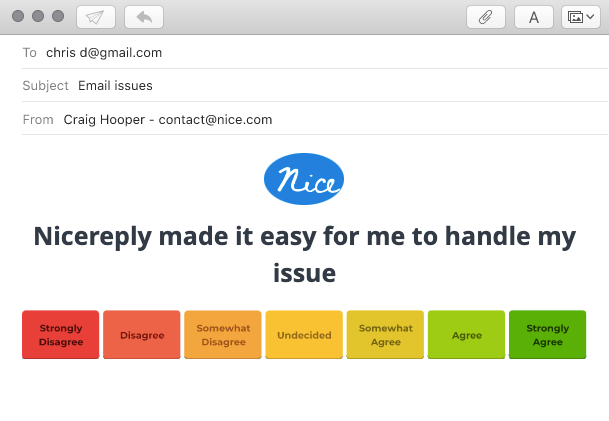
Phew, that all sounds like a lot of work, doesn’t it? Thankfully, automation tools can now handle much of the work. When a customer makes a purchase from your website, it can be an automatic trigger to send out a follow-up email that thanks them for their business and then goes on to ask whatever question you have decided on. Similarly, with actions such as abandoning their cart, an automated email or pop-up survey can investigate the reasons for that abandonment.
Automation can take a lot of the work out of every step of the feedback and other processes. You can even opt for customer service and support automation solutions to reduce pressure on teams or in call centers. These automated solutions mean that you can look at more feedback than if only using human staff and that those same staff are freed up to focus on other tasks.
Analyze and categorize patterns
It’s all very well having that information and data, but what are you going to do with it? The next step in your process is to analyze your collected information. You may want to look at your cart abandonment rates and the reasons for it. Whatever information you are looking at, you want to drill down into it and get information you can base informed decisions on.
There may well be patterns in some of the data you have harvested. For example, if you operate a call center, you may see certain days of the week have both higher call volumes and higher call abandonment rates. Seeing that information clearly can allow you to make adjustments to staff schedules to try and bring that abandonment rate down.
Respond to customers for appreciation and action
Everyone likes to be appreciated, and that especially holds true for your customers. You may already have automated emails in place that thank them for their purchase, but you should also be thanking them when they participate in any sort of survey.
You also need to consider responding to any online reviews. How you respond — and if you solve their problem — can play a big part in retaining their customers or avoiding them becoming just another churn statistic. Customers also like to see that you have taken action based on their — and others’ — feedback.
Utilize insights for improvements
There is little point in collecting the different types of customer feedback, processing and analyzing the data, and then doing nothing about the insights you have gained. One of the main reasons that you use feedback is to identify any pain points that customers have experienced and improve them so they no longer cause issues.
From a more general perspective, you will be constantly looking for ways to enhance all aspects of your business’s performance. That can cover any aspect of your organization, from your customer service team to the products you offer. Feedback can give you direct pointers to where you are going wrong or where you are doing things right.
Customer feedback: An ongoing journey
A company that uses different types of customer feedback is a company that listens to its customers. After all, they are the ones who are your lifeblood and who provide the revenue that allows your company to hopefully grow. While you, quite rightly, are happy when feedback is positive, you can also use any negative feedback to improve performance.
Feedback is an ongoing process. There will always be room for improvement or change. It can be through feedback that you can identify and rectify issues, and also, make effective customer analysis imperative to adjust your product and marketing. And it’s through feedback that you know either how to improve products or identify new products to develop or purchase from manufacturers. Think of feedback as a constant conversation with your customers, and they will recognize this.
If you’re improving your customer service continuously — we have something for you. Share some tips on how to say no to customers with your team — they’ll find helpful solutions in the article!





